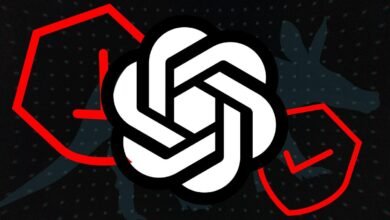AT&T’s AI Receptionist Answers Calls & Blocks Spam Automatically

▼ Summary
– AT&T is testing an AI-powered digital receptionist to screen calls for select customers throughout 2025.
– The AI assistant answers calls, asks questions to determine legitimacy, urgency, and whether to forward or handle the call itself.
– Users can view live transcripts, interrupt calls, or add contacts to a “Do Not Screen” list for direct access.
– The system uses multiple large language models and fraud-detection algorithms while promising user data security.
– This feature aims to reduce spam call burdens, though it is still in a test phase to refine capabilities and address AI limitations.
Ever find yourself staring at your ringing phone, unsure whether to pick up an unknown number? That moment of hesitation is all too familiar in an age where spam and scam calls have become a daily nuisance. AT&T is launching an AI-powered digital receptionist designed to screen incoming calls automatically, aiming to distinguish legitimate calls from unwanted ones before they ever reach you.
Set to roll out in a testing phase for select customers throughout 2025, this automated assistant answers calls on your behalf. Using advanced voice-to-voice interaction and agentic AI capabilities, it engages the caller with questions like, “Who may I say is calling?” or “What is this regarding?” Based on the responses, it decides whether to forward the call, take a message, or end the interaction entirely.
You’ll have full visibility into these conversations through a live transcript, giving you the option to jump in at any moment. Once the call concludes, a summary is provided so you can decide whether to call back. Importantly, contacts on your “Do Not Screen” list, such as family, friends, or frequent callers, will bypass the AI receptionist entirely and ring through directly.
During this test period, AT&T will continue refining the system’s functionality and expanding its capabilities. The company’s Chief Data Officer, Andy Markus, has hinted at even more sophisticated future applications, such as an AI agent that could make restaurant reservations on your behalf after receiving simple voice instructions.
Of course, AI technology is not without its flaws. Current systems can misinterpret context, struggle with complex requests, or make errors in judgment. That’s precisely why AT&T is introducing this feature cautiously, as a limited test, to evaluate its real-world usefulness and reliability.
Behind the scenes, the digital receptionist relies on multiple large language models (LLMs) to process speech, generate appropriate responses, and convert them back into audible dialogue. It’s also equipped with fraud detection algorithms that analyze calling patterns to identify and block potential spam. User privacy remains a priority; personal data is used only to improve call handling and is not retained unnecessarily.
While spam filters and call-blocking tools already exist from various carriers and software developers, they often still require user intervention. AT&T’s AI receptionist could represent a significant evolution in hands-free call management, shifting the decision-making burden from the user to an intelligent automated system. If successful, it may soon become a standard feature for those tired of unwanted interruptions.
(Source: ZDNET)





